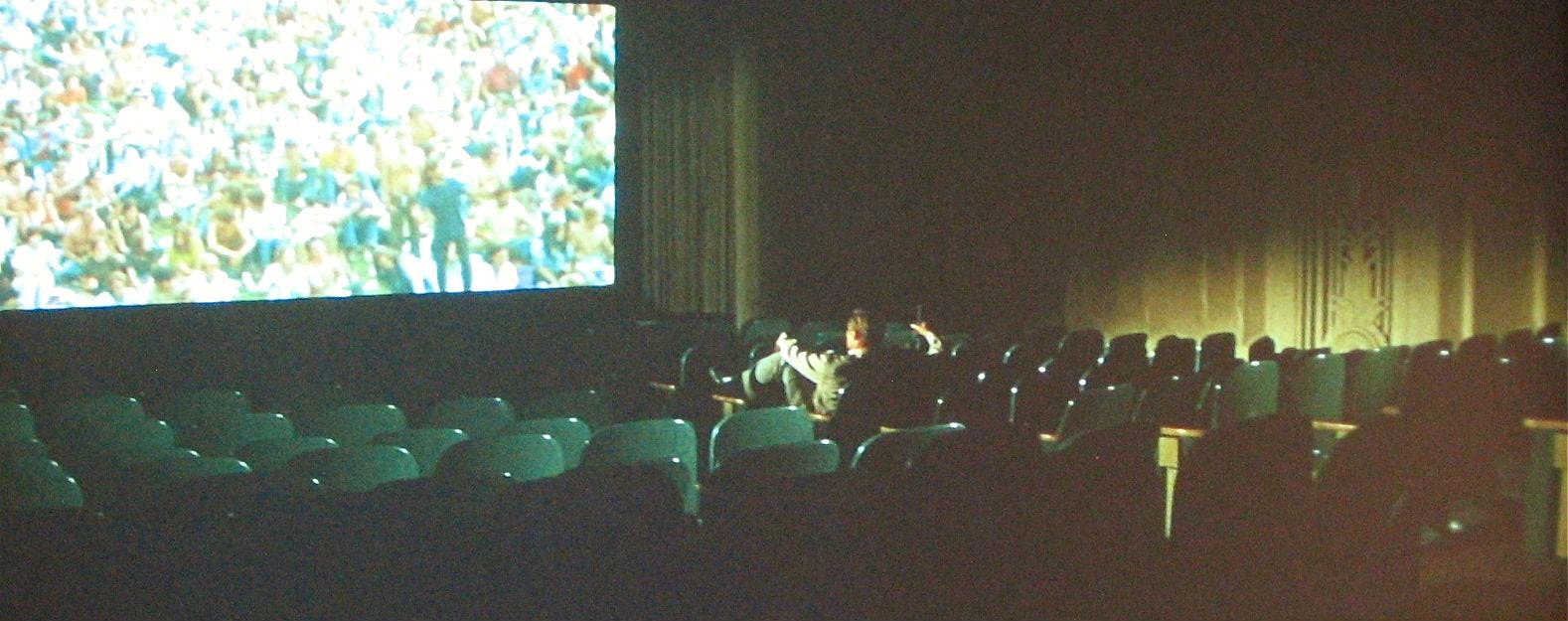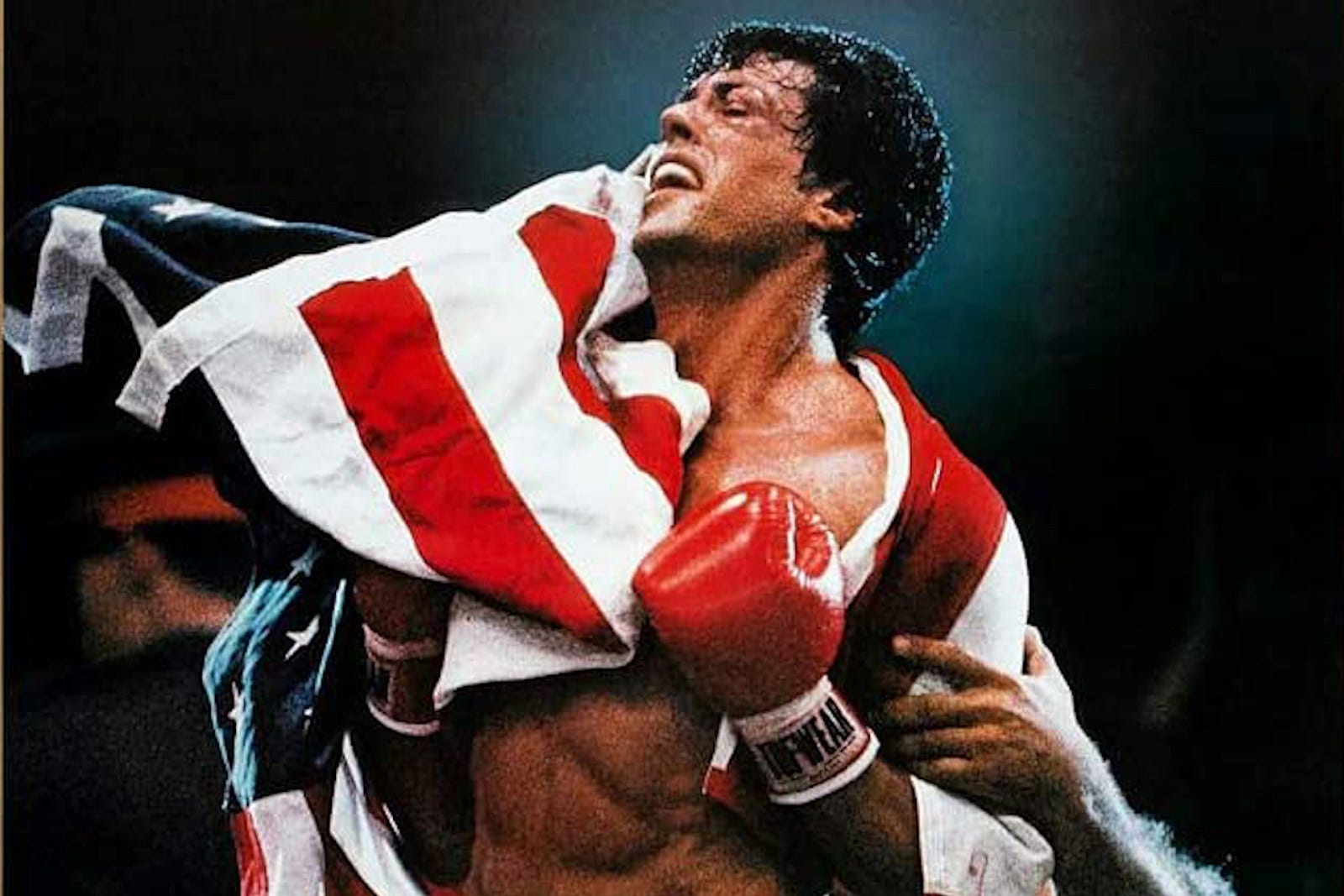If you haven’t signed up for Bulwark+ (and if you’re reading this, I know you haven’t) you should. Don’t cost nothin’ (for two weeks). There’s no bigger defender of the theatrical experience than yours truly. In a very real and fundamental way, I think that films are only really films if you’re able to see them (at least initially) in a theater, that straight-to-streaming projects may be worthwhile and may make more projects by a greater array of creators to be seen by more people than ever before, but they are more likely to be “content” than cinema, properly understood. Yes, yes: I’ve caught up on a hundred years of cinema from home; perhaps you have as well. I can appreciate Citizen Kane as the greatest film of all time even if I’ve never seen it in glorious 35mm. I’ve still never seen The Godfather or Casablanca projected in a darkened room; that doesn’t mean they aren’t amazing. But there’s nothing like being cocooned in a theater—ideally with your phone off or silenced; preferably with strangers who are watching respectfully rather than chatting with their compatriots—to really immerse oneself in a film. I’m glad my initial experience with Barry Lyndon was via a 35mm print at the AFI Silver in Silver Spring, Maryland. I simply do not think I would have appreciated it the same at home on VHS. And I, frankly, do not blame the people who have ever seen it at home on VHS (or DVD or Blu-ray) for looking at it and saying “this is boring, I don’t get it.” (This is also how I felt about 2001: A Space Odyssey until I saw it in 70mm.) You need the size and the scale of the big screen to really appreciate Kubrick’s compositions—but you also need the enforced isolation of the screening room. Again: no bigger defender of theaters than me. When I am king, all movies will have a four-month exclusive theatrical run, the rivers will run red with the blood of Netflix executives, etc. (Just kidding, Ted!) However. There is a problem with theatrical exhibition. And that’s the exhibition part. At Vulture, Lane Brown dives deep into the issues plaguing projection at your typical multiplex. The problems are varied—projectors misaligned with the screen; 3D filters left on non-3D films, which radically reduces brightness—but one of the biggest issues is that of manpower. Simply put: theaters don’t really have projectionists any longer. After the changeover to digital projectors that coincided with Avatar and the 3D boom of the late-2000s and early-2010s, most projector work was automated. That saved theaters money, but also led to an exsanguination of expert blood from the body theatrical. As Brown notes, “highly skilled engineers and troubleshooters. Now that multiplexes use automated projection, problems fall to house managers, who, in this age of austerity, may be the same overworked employees ripping tickets and selling popcorn. If an error is serious or demands more than a wiped lens or system reboot, it might have to wait a couple weeks for a visit from a technician — or even longer if nobody complains.” A quick story: I saw Ghost in the Shell at the AMC Georgetown’s Dolby Atmos theater in 2017. Something seemed off from the get-go—the MPAA ratings were cut off at the bottom of the previews—but I figured I’d wait to see what happened with the movie. Sure enough, it was being projected in the wrong aspect ratio, a fact confirmed by several subtitles being cut off throughout the screening. It was annoying but I didn’t want to leave the theater to complain and miss any of the movie. So I just dealt with it. Fast forward three months later: I’m seeing Atomic Blonde on the same screen and, sonofagun, the preview ratings box is cut off again! So, I run out of the theater, track down an employee, and tell him that the movie is projecting in the wrong aspect ratio. He looks at me doubtfully but says he’ll check into it. Sure enough, midway through the previews everyone in the theater sees the aspect ratio change once, twice, then, on the third one, settle into the correct format. No problems from there out. When I left the theater, the employee grabbed me and asked, with wonder in his voice, “how could you tell something was wrong?” Dear reader, I died a little inside. Look, I know times in theatrical exhibition are tough. Cue the Starship Troopers meme: I’m doing my part. I’m going to the movies, I’m encouraging others to go to the movies, I’m writing about how much I love the experience and I hope I can convince everyone else to love it as much as me. I want the studios to increase their output and regain their belief in the financial and artistic imperative of theatrical exhibition. I hope someone buys Regal. I want AMC to thrive. I hope my local Drafthouse, at which I pay for a season pass, never goes away. I love the experimentation we are seeing at multiplexes, from premium formats to better seats to superior dining options to full bars. But it’s extremely difficult to convince folks that it’s worth their time—and their money—to go to the theater when the thing they think they’re there for (that is: The Big Screen Experience) is impossible to enjoy properly because the screen is too dark to see what’s going on. One of my all-time favorite episodes of The Bulwark Goes to Hollywood was the first interview I did with Tony Davis, who worked with RealD on 3D technology and is an absolute genius when it comes to projectors. If you want to understand why things don’t look as good as they should, you must listen to this discussion, particularly the back half. This week’s episode of BGTH is with Michael Schulman, the author of Oscar Wars: A History of Hollywood in Gold, Sweat, and Tears. The ways in which the Oscars have shaped the movies (and vice versa) are truly fascinating. You can subscribe via iTunes here or just wait for the email to hit your inbox tomorrow! Links!This week I reviewed Creed III, the movie that reveals, once and for all, Adonis Creed to be the villain of his own story. I don’t know that American drinking needs “saving,” but I am very much in favor of one of the suggestions in this piece: martini glasses that can hold more than five ounces of liquid should be outlawed. A proper Manhattan will have a little more than three ounces of liquid; a martini will probably be closer to two and a half. These fishbowl-size martini glasses you get at restaurants and bars not only encourage over-serving but also leave your drink warm by the time you get to the bottom of it. No one wants that! (So if you’re keeping score at home, this means that my monarchy will involve not only forcing you to see movies in theaters but also forcing the theaters to serve you smaller glasses of booze. I’m probably getting guillotined, aren’t I?) On Across the Movie Aisle this week we sang the praises of Poker Face. And on the bonus episode, we talked about our favorite TV and movie detectives. Congrats to Bulwark contributor Greg Ferrara on the success of his short film, “Sustained Reaction”!  SUSTAINED REACTION does it again! Just notified in advance that SUSTAINED REACTION has won Best Science Fiction Short at the Montreal Independent Film Festival! Going to have to update the poster with this win and Berlin's. Feels good, folks. Assigned Viewing: Rocky IV (Netflix, Amazon, elsewhere)I rewatched this because I was discussing it on another podcast this week and it’s fascinating to watch all in one go—as opposed to in bits and pieces on TNT or TBS or whatever, as I have for the last 30 years—because it is, really, barely a movie. There’s, like, 28 minutes of movie and then 45 minutes of strung-together montages and then about 20 minutes of boxing at the end, along with a speech that singlehandedly ended the Cold War to take us home. Weird picture! (Note: I was watching the theatrical cut because that’s what was free to stream; apparently the recent re-edit makes the whole thing more movie-like.) If you’ve made it all the way down here, you love the newsletter. Help keep it sustainable by become a paying subscriber. You can update your newsletter preferences as often as you like on your personal My Account page. Catch up on the latest Bulwark+ member newsletters and podcasts, here. And feel free to drop us a note anytime by simply replying to one of our emailed newsletters. |






